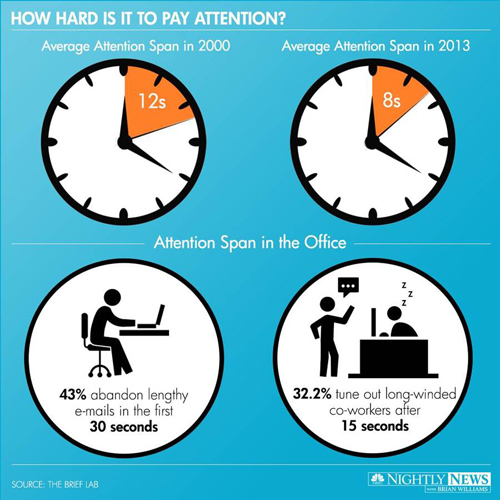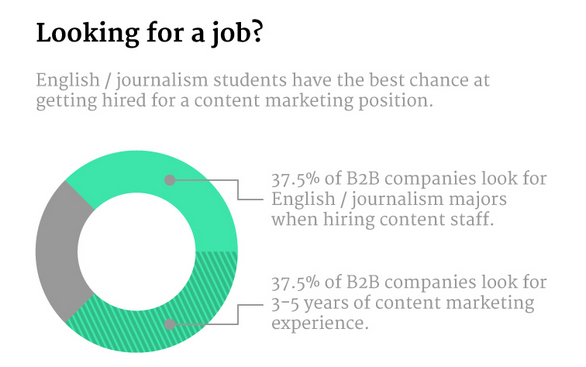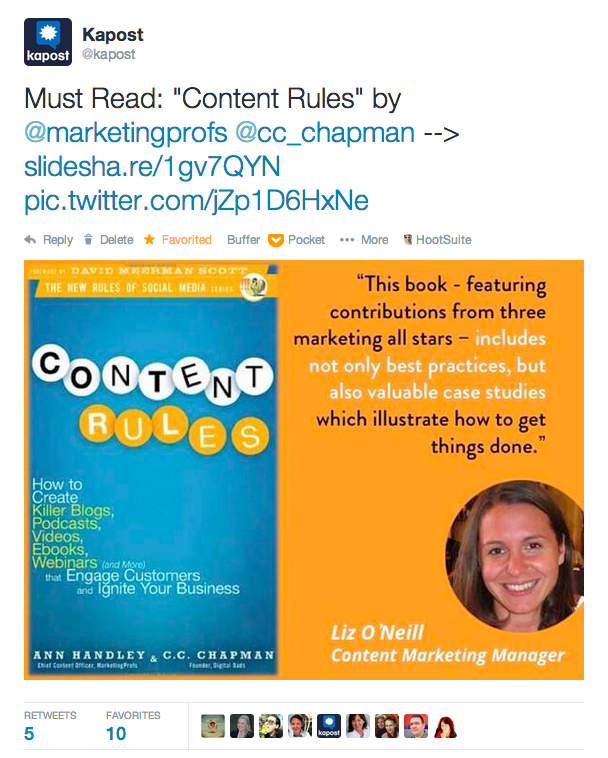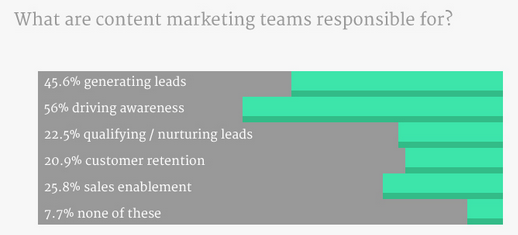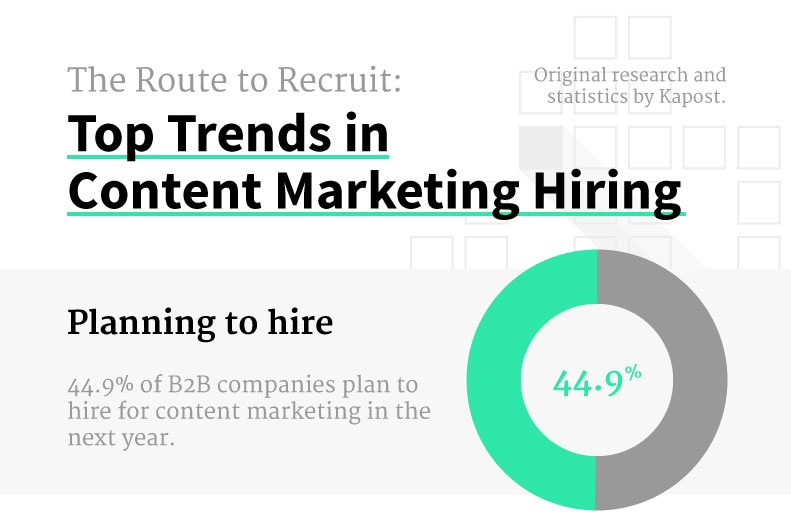In modern marketing, there’s a heavy emphasis on brevity, particularly when it comes to social media. We live in a distracted society with ever decreasing attention spans. So to grab attention and keep it, you have to say what you need to say—and in the least amount of words possible.
Ideal email subject lines should be 28-39 characters. Blog headlines should be about 6 words long. Tweets should be 100 characters. And so on. But while these are all great practices to follow, sometimes you just can’t present everything in 500 words or less, let alone 500 characters.
Sometimes you just can’t present everything in 500 words or less…Enter long-form content.
Enter long-form content. eBooks are a phenomenal way to explore a topic in greater depth while generating high caliber leads. Publishing proprietary research can get you noticed within your industry and written about or referenced widely.
Recent posts like this one and this one have even expressed the value of letting your blog posts run upwards of 2000 characters. While long-form content shouldn’t be the only type of content you produce, it does hold a valuable place in your marketing strategy. At Kapost, this type of content is often the centerpiece (or “content pillar”) of a quarterly campaign.
Where many marketers run into challenges, however, is promoting their long-form content—particularly in channels where being concise is key. Far too often, content promotion on social media looks like this:

Title of the asset? Real creative, Coate.
With so much to say, how do you create a pared-down message for social media?
It seems marketers are often at a loss when it comes to short-and-sweet messaging about their long-form content. With so much to say, how do you create a pared-down message for social media?
The truth is, long-form content is a gold mine for social media. It provides you with ample amounts of short, snappy, intriguing posts. In this article—which might get a bit long—I’m going to explain strategies and provide examples of breaking your long-form content into digestible, attention-grabbing pieces that play well on social.
So, the parts of the content pillar approach I’m pointing to below.
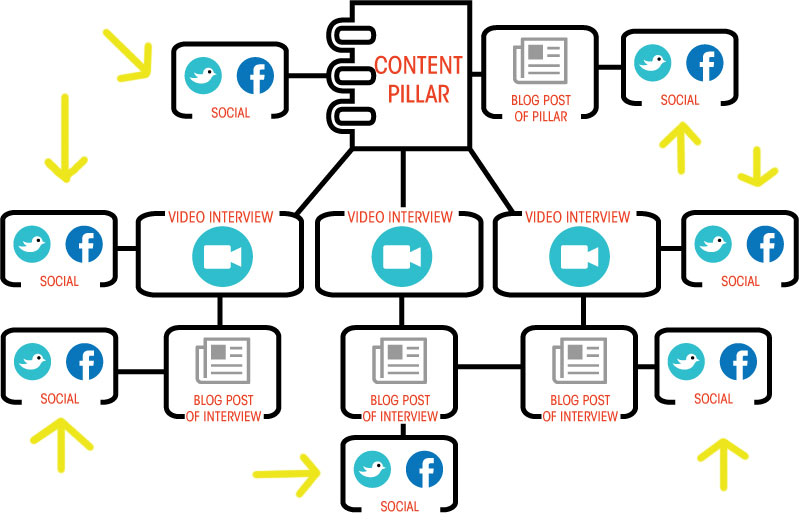
If you’re unfamiliar with this idea, this diagram illustrates how one content pillar can inform hundreds of content pieces. A more comprehensive version of this diagram is available in the eBook, The Blueprint of a Modern Marketing Campaign. There, we walk you through how one content pillar can produce 269 content assets.
Go Beyond the Headline
When it comes to promoting content on social, many marketers share the headline and go no further. But why stop there? There are plenty of interesting tidbits contained in that content, so why shouldn’t some of that be shared?
Dig through your blog posts, eBooks, videos, and SlideShares to find interesting statistics or sentences to pull out and share.
These are examples of tweets I created related to that same content marketing for Business Services eBook above:
Not all industries can incorporate content into their #marketing strategy the same way. –> https://bit.ly/1jf1uOw
Learn how to market your business services with content. –> https://bit.ly/1eR9gRP #contentmarketing
In a “boring” industry? You can still be great at #ContentMarketing –> https://bit.ly/1eR9qsn
This eBook is your indispensable guide to #marketing your company’s business services with content –> https://bit.ly/1eR9tVb
Ready to develop content that makes your business services stand out? This eBook shows you how –> https://bit.ly/1eR9vwr
For every blog post we write, I share the post 4-5 times the day of, and at least 15 times that month—so I have to write a variety of posts in order to keep things fresh. We actually see higher click-thorough-rates on these type of tweets, than just sharing a headline.
Create a Short Video Introducing the Topic
Video has become quite the topic for content marketers. as Forbes explains, people respond to faces, voices, movement, and emotion—and video often contains all four of those elements, making it one crazy-powerful marketing tool. And, as Jennifer Pepper of Vidyard explains, you don’t have to be James Cameron to make epic video content for your brand, either.
How to create short-and-sweet messaging about your long-form content by @andrewjcoate
Video promoting a longer piece of content can be as simple as a few sentence introduction or overview of what’s contained in the longer content and why it matters.
Like this:
Create a Bunch of Related Images
If creating a video is too much of a strain on time and resources, it’s extremely easy to create supporting images for your content. In the case of a whitepaper or eBook, this can be as simple as formatting or “slicing and dicing” images that already exist within the larger piece of content to be sharable on social.
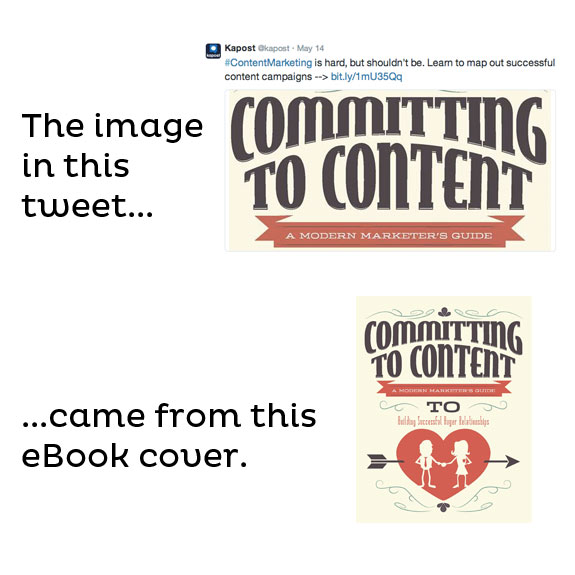
Even the most “design-light” whitepapers likely feature graphs or charts with data that can be shareable. Like these:
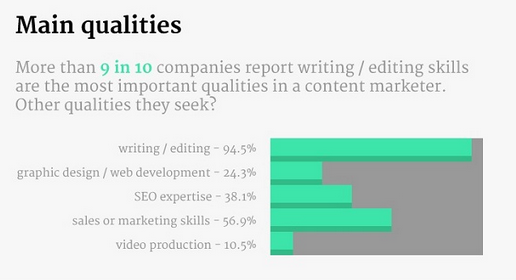
Sometimes it’s as easy as “crop”

You don’t need Photoshop skills however to accomplish this, however. Free tools like Canva allow you to simply and quickly create imagery of any size from custom artwork or preloaded libraries. Using images like this has a powerful effect on social media promotions. Images make you stand out.
Call Out the Contributors
I work with a talented team of writers and I prefer to highlight the great things they have to say, often as quotes. This serve a few purposes.
Quoting someone establishes credibility, and social media is a way of endorsing the things people say. By tweeting out a quote from your writers and @-mentioning them or posting to Google+ and tagging them, credit is given where credit is due (which often leads to retweets or posts from the authors). This establishes them as thought leaders in their own right, and draws attention to potentially their key points from longer content.
In addition, giving others “props” on social is an easy way to boost engagement, but also an easy way to generate more content. For example, we made a SlideShare called “30 Books That Belong in Every Marketers Library.” In it, we named 30 books, written by a number of influential voices in the marketing space. Rather than tweeting the title over and over, I broke out each individual slide, and sized it appropriately for social media. I then scheduled surrounding social posts out over the course of the next month, with an image of the slide and tagging the authors on Twitter, LinkedIn, and Google+.
This strategy helped us triple our views of the SlideShare over the month, often as a result of being retweeted or posted by the tagged authors. We saw an influx of engagement and good will from these individuals as well.
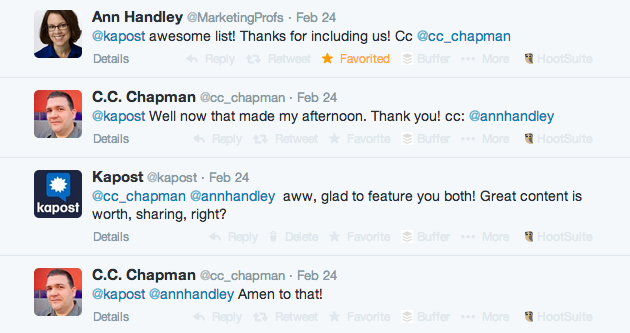
Even if you don’t have a piece like this that easily gives you a number of points to interact, you can find ways to engage with the people or companies involved or mentioned in your content.
Call Out the Stats
People love stats. They’re easy to find, easy to digest, easy to share on social media. We have a page called “Cold, Hard, Content Marketing Stats,” which was our 5th most visited page on the site in Q1 2014 and has been shared on social over 400 times. And this engagement comes from little to no promotion surrounding it.
Stats are not only great to share, they’re incredibly easy to call out visually.
Highlighting statistics also showcases expertise, especially if those stats come from original research conducted by your organization. Stats can easily be made into shareable pull-quotes in a blog post, or into social imagery such as below.
Use Long-Form Friendly Platforms
Find ways to get your content on LinkedIn and Google+.
Find ways to get your content on LinkedIn and Google+. And stop rolling your eyes.
I bet you rolled your eyes just now, especially given the recent hubbub and rumors about the latter platform. But here’s the thing— Google+ has huge benefits as a publishing platform. Unlike the character limits of other sites, Google+ allows for long-form posts. Some people even use Google+ as a blog. Mark Traphagen—widely recognized as the G+ Guru, regularly shares long updates, using Google+ as others use blogs.
Google+ also integrates imagery and video in ways other sites simply can’t. Use this flexibly to write a longer explanation of what you’re sharing, or even to share a few paragraphs as a teaser. Marketers love to think they can host everything on their websites, but the sad part is enterprise websites suffer from usability issues.
Websites are often so clunky or jam-packed, it’s hard to draw attention to yet another piece of content. Many are also crippled by complex back-end or other CMS inefficiencies. Stop thinking of Google+ as a dead social network, and start looking at it as a valuable place to post parts of attractive content that might draw in or link to the larger piece.

HP excels at Google+
And while the jury’s still out on LinkedIn’s Publishing platform, with a seeming boom-or-bust reaction to published posts, that boom can be very worth it in terms of visibility and lead generation opportunities.
As you can see from the examples above, long-form content provides a plethora of opportunities to drive engagement. While this doesn’t mean you should produce only big, lengthy content pieces, it does mean that when you do, you should be able to promote it creatively, and get continued traction from all that hard and wordy work.

